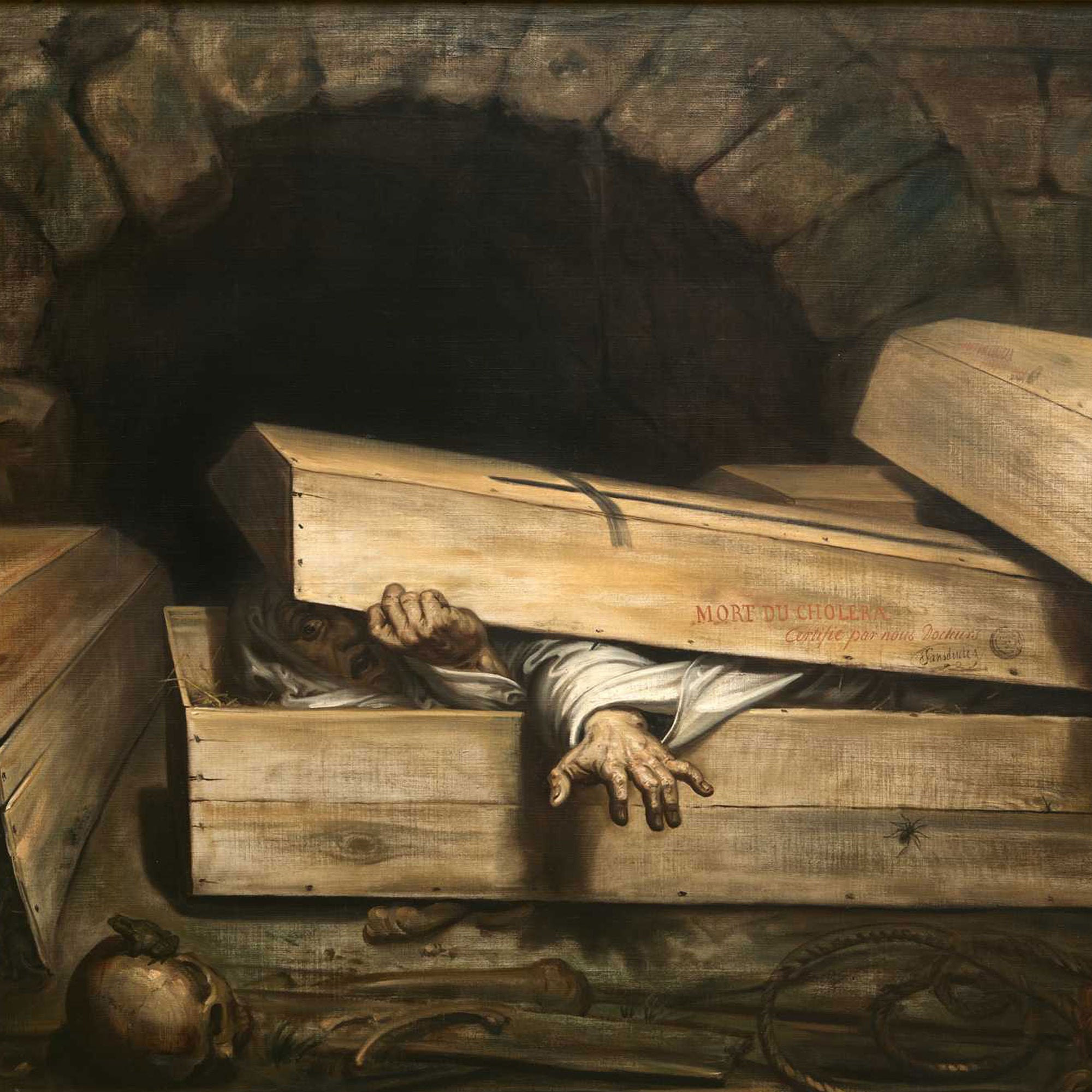How Does Lithography Work?
Read on to find out!
Paint a solution of gum arabic (possibly mixed with a mild acid) onto the plate; this chemical reaction fixes the drawing and ensures that the blank areas repel ink and absorb water. Next, apply a solvent called lithotine to the ink drawing - this will wipe away the ink and leave a faint trace on the plate. To provide a base for the ink, coat the plate with asphaltum (bitumen) and leave it to dry.

Printing workshop with a lithographer and a plate printer - V. Janson |
Why Was Lithographic Printing So Impactful?
|
Man in an apron behind a workbench, busy sharpening a lithograph. Against the wall next to him a print with a scene from La Fontaine's Fables: The Milkmaid and the Milkpot. Possibly from a series of prints. |
What Is Offset Lithography?
Famous Artists Who Used Lithography
Henry Fuseli was an artist known for fantastic interpretations of classical themes. This pen and ink lithograph is titled 'Evening Thou Bringest All (Lady at a Window)'. He is best known for his painting, 'The Nightmare', which depicts an evil incubus atop a sleeping woman.
Interested in Learning More?
We've collated some resources to help you get started.
Workshops
The Lemonade Press (UK)
St Barnabas Press (UK)
Australian Print Workshop (AU)
Duck Print Fine Art (AU)
Print Workers Barcelona (ES)
Screen Printing (DE)
Hadass Gilboa (DE)
Chicago Printmakers (USA)
Tamarind Institute (USA)
Books
The Encyclopedia of Printmaking Techniques: A unique visual directory of printmaking techniques, with guidance on how to use them (New edition)
Block Printing: Techniques for Linoleum and Wood
Essdee Lino Cutting & Printing Kit (23 Pieces)
The Printmaking Ideas Book (Craft Ideas)
Level Up Your Creative Practice
Introducing the ultimate creative powerhouse: The Mega Bundle by Vault Editions! Boasting an incredible 7,531 high-resolution images from 37 of our most popular titles, this digital bundle is a must-have for anyone looking to take their designs to the next level. But that's not all – we've also included five print-at-home craft eBooks and a digital copy of our Tattoo Lettering Inspiration Reference Book. The creative possibilities are truly endless.
Whether you're a professional designer or just starting out, this Mega Bundle will blow your mind with its stunning collection of images and an impressive variety of genres. From anatomy and medical illustrations to insects and botanical art, this bundle has something for everyone. And with the ability to quickly create client designs, impressing your peers has never been easier.
We know that delivering quality work on time is critical, which is why all of our images are high-resolution files, ensuring that your final products will look nothing short of amazing. So why settle for mediocre designs when you can go all out with the Vault Editions Mega Bundle? With so much creative potential at your fingertips, the possibilities are truly endless. Get your hands on the Mega Bundle today and take your creativity to new heights!









